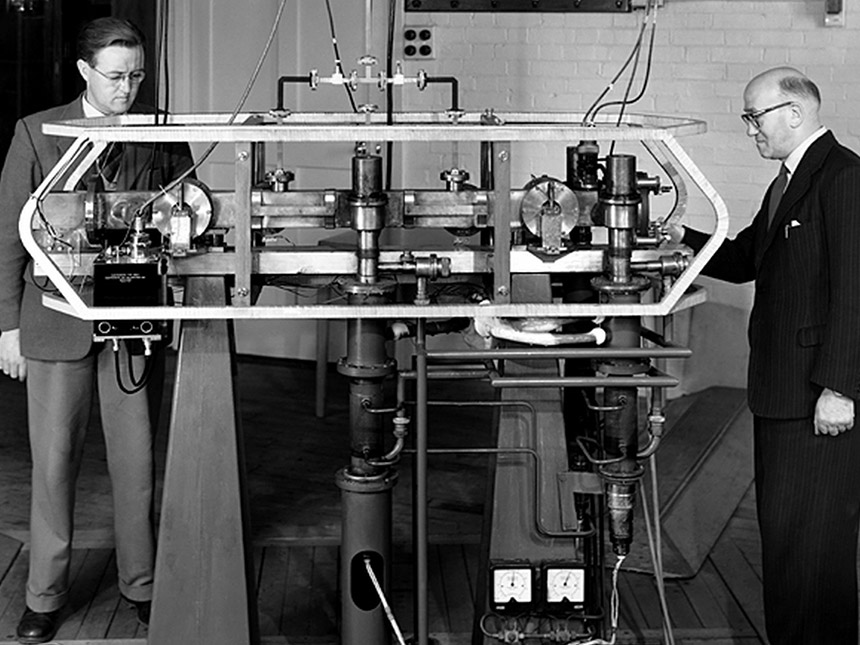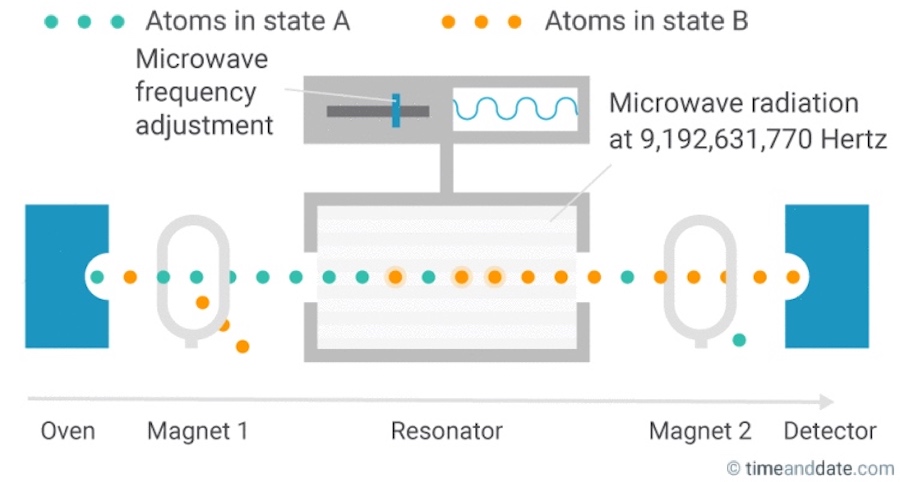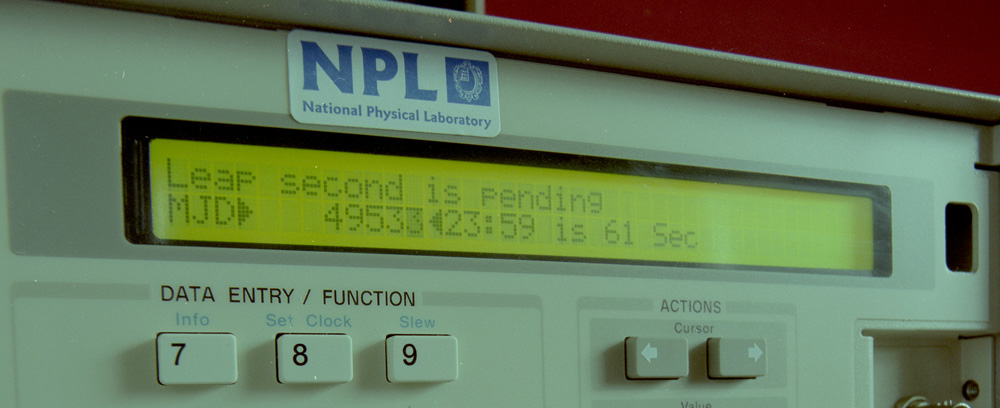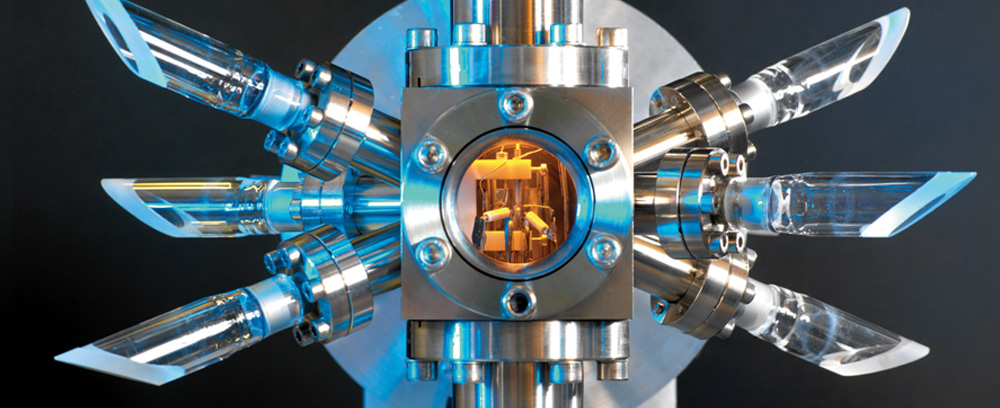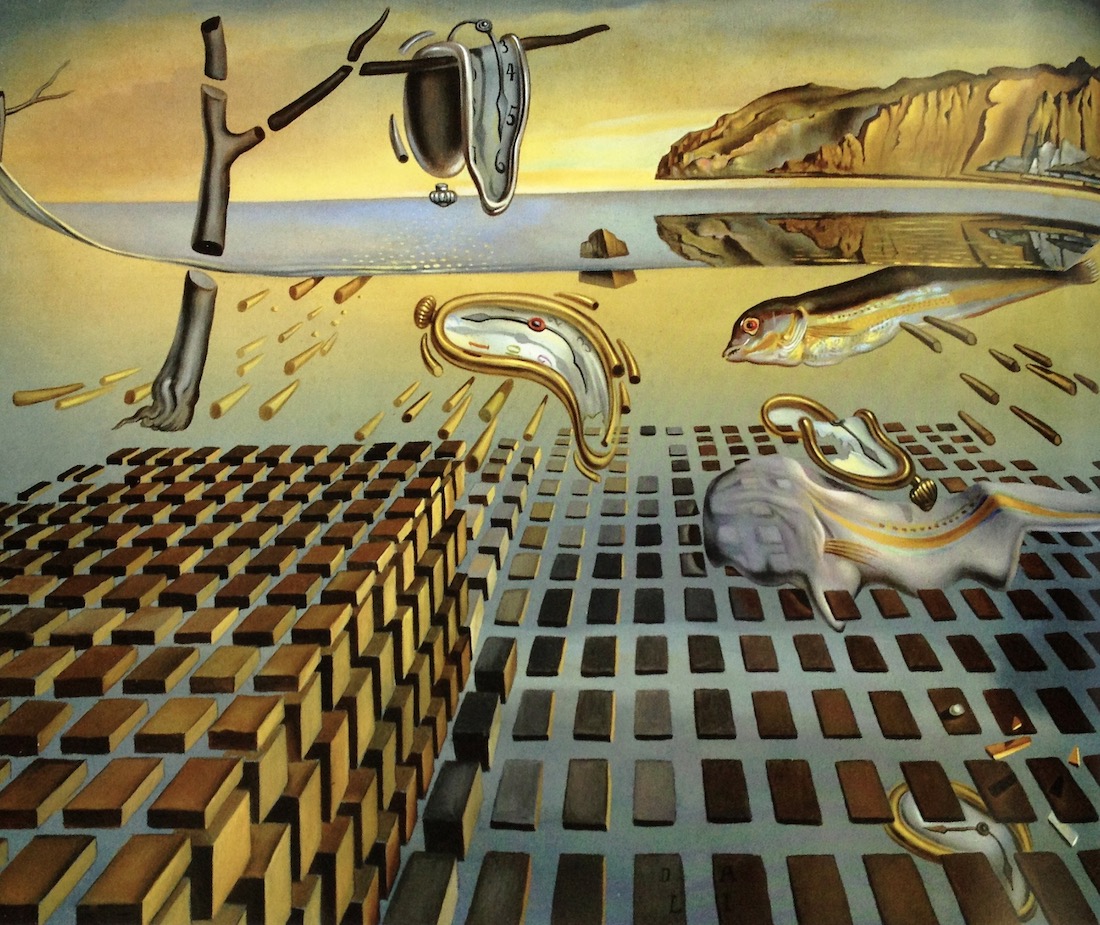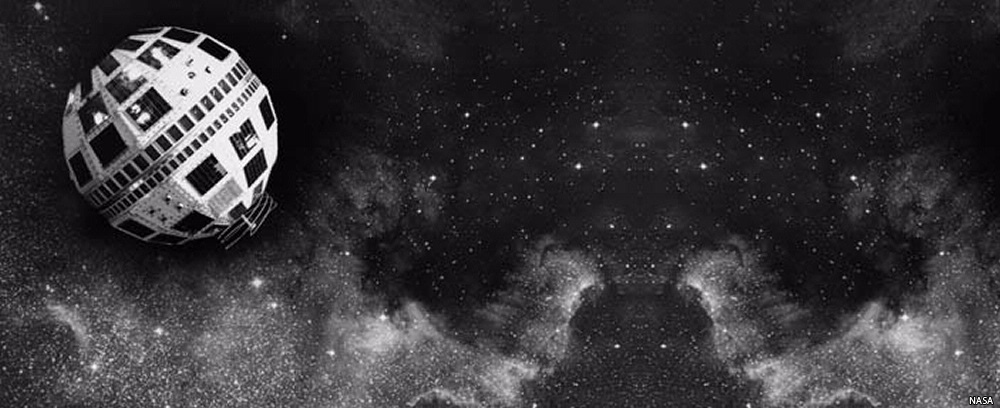
Telstar 1 Satellite, used to carry out first two-way transatlantic clock comparisons. Image Source: National Physical Laboratory
Your Lucky Number: 9,192,631,770
Since 1967, the International System of Units (SI) has defined the second as the duration of 9,192,631,770 (in short: over 9 billion) cycles of radiation corresponding to the transition between two energy levels of the caesium-133 atom. In 1997, the CIPM added that the preceding definition refers to a caesium atom at rest at a temperature of 0 K.
The complex ways an atomic clock works are borderline impossible to describe without sounding too scientific, but the very basics of what you need to know is that it relies on the remarkably stable “buzz” of subatomic particles, an electronic oscillator operating at microwave frequency, as well as frequency-determining parts.
First, the atoms are heated in an oven and bundled into a tube. Each atom has one of two possible energy states, referred to as hyper-fine levels – for clarity, let’s call them state A and state B. A magnetic field removes all atoms in state B from the beam, so only atoms in state A remain.
The state-A atoms pass through a resonator where microwave radiation triggers some of the atoms to change to state B. Behind the resonator, atoms that are still in state A are removed by a second magnetic field. At the end, a detector counts all atoms that have changed to state B.
The percentage of atoms that change their state while passing through the resonator depends on the frequency of the microwave radiation, so the atomic clock’s job is to sync that frequency with the inherent oscillation frequency of the atoms. The goal is to perfectly fine-tune the microwave frequency to the oscillation of the atoms, and then measure it. After exactly 9,192,631,770 oscillations, a second has passed.
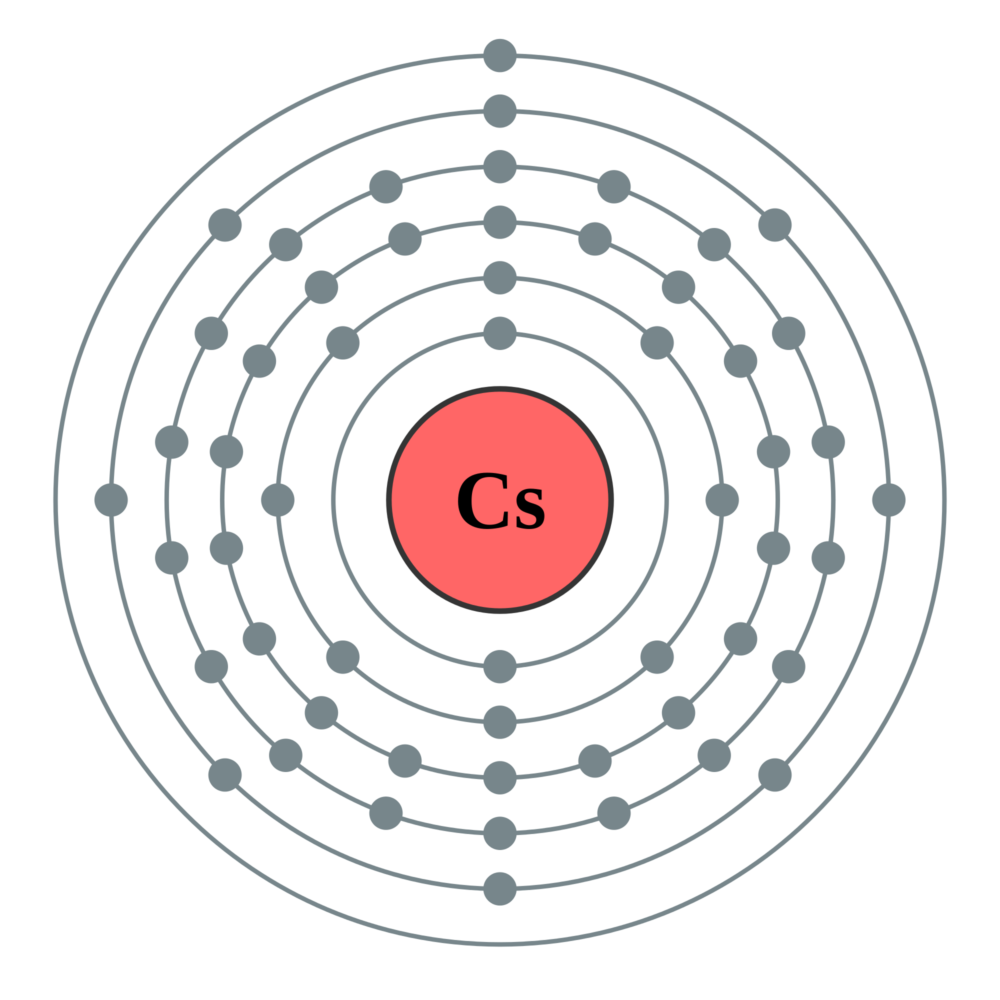
This gave the world the “caesium standard” where the definitions of other physical units (Volt, meter, etc.) rely on the definition of the second. If you are wondering how a meter (1.09 yards) can be defined through the second (I was, so I looked it up), here it is: a meter is defined as the length of the path traveled by light in a vacuum in 1/299,792,458 seconds. To determine this, you really need to know very accurately indeed how long a second lasts.
300,000 Times More Accurate…
People in the know say that the accuracy of our atomic timekeepers has steadily improved by a factor of 10 or so every decade. The most notable improvement in the accuracy of caesium clocks was achieved through the use of laser-cooled caesium atoms in complex laboratory clocks known as caesium fountains. The British National Physical Laboratory’s (NPL) primary clock, the caesium fountain NPL-CsF2, has for long contributed to the generation of the international time scale UTC and hence the reference for the UK’s national time scale UTC. It is over 300,000 times more precise than Essen’s original clock, which is now housed in the Science Museum in London.
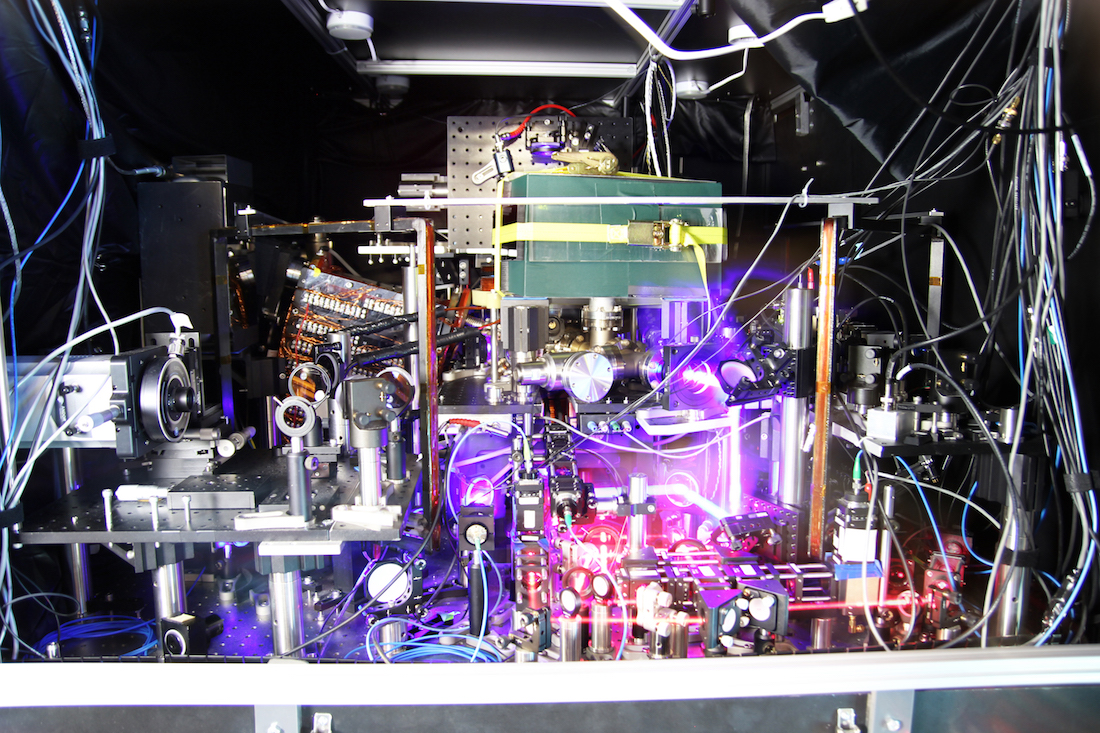
The JILA Strontium optical clock is world’s most precise and stable, not losing one second over the course of 5 billion years. Image Source: JILA & NIST Labs at the University of Colorado
…Now Accurate To +/-1 Second Per Billion Years
Advancements in technology cannot be stopped, though, so don’t for a second (pun intended) think that scientists and engineers stopped pushing the boundaries of chronometric performance. You see, most atomic clocks are still not that precise, as they can accumulate an error of about one nanosecond over a month – for all sorts of scientific use scenarios, that is just not good enough.
The solution comes in the form of so-called optical clocks. These use atoms or ions that oscillate about 100,000 times higher than the microwave frequencies of atomic clocks. This, just like a frequency bump in a mechanical watch from 4Hz to 5Hz, means greater stability and better performance over time.
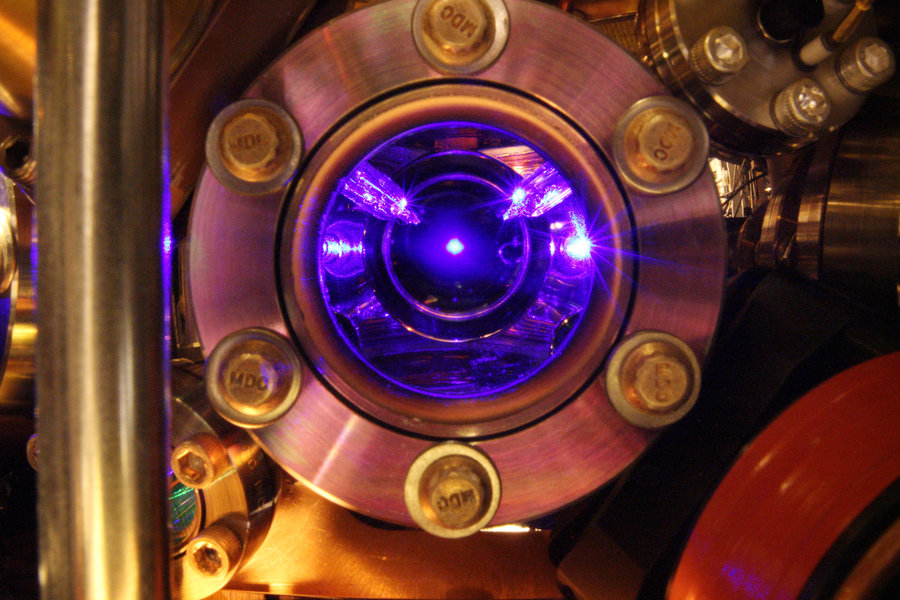
While optical clocks are not quite as reliable as they need to be, NIST scientists say that using a redundant system that can continue to run even if one of the dozens of lasers inside the machine break down allowed one of these clocks to remain accurate to about .20 nanoseconds over the 25 days it ran. Scott Diddams, head of a team of scientists at NIST said: “That means, if you started this clock at the beginning of the universe with the Big Bang, it would likely not have gained or lost a second for the entire age of the universe.”
If you really want to nerd out over this, I suggest reading up on optical and quantum clocks, and especially rare-earth element ytterbium ion-clocks – just so much fascinating stuff, but we really are getting into extremely nerdy and scientific topics here that are better discovered to the depths you feel comfortable with on your own.
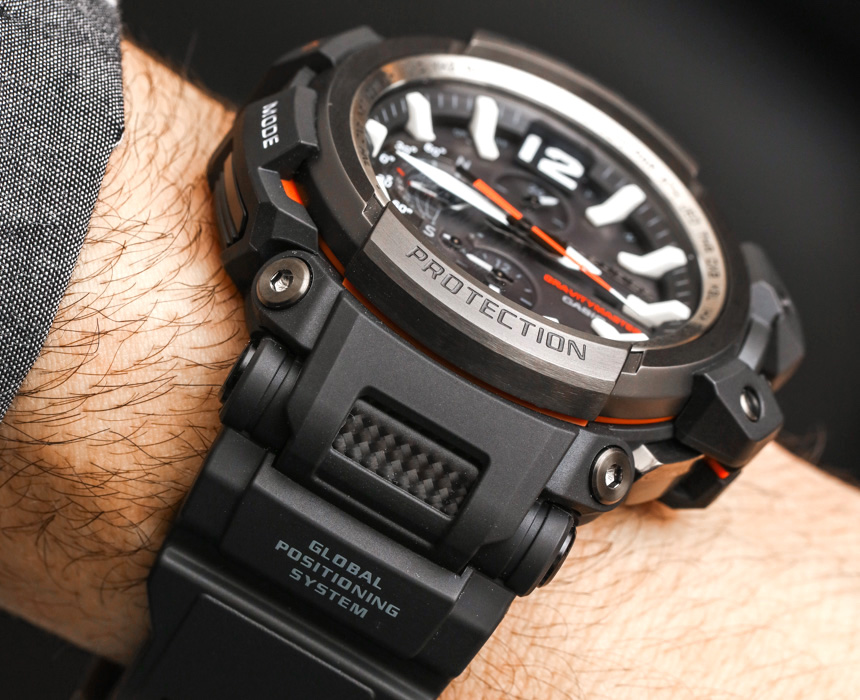
How The Atomic Clock Helps Improve Our Daily Lives
Today, about 400 atomic clocks around the world, interlinked via satellite, help keep global time accurate. Probably the most important application is that in Global Navigation Satellite Systems (or GPS, as it is commonly called). Like so many other technological advancements, most of us take this for granted – I sure do, just occasionally taking a moment to think about how thoroughly amazing this technology is.
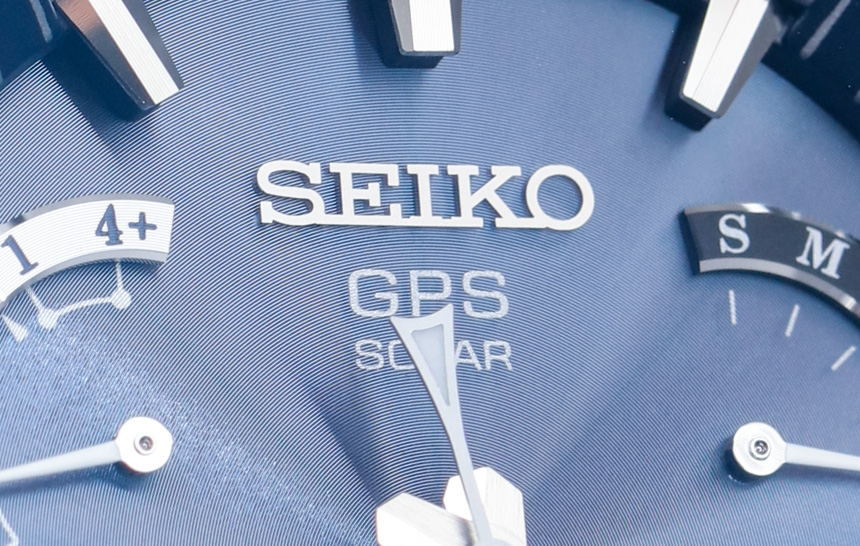
However, without knowing the very exact time at any given moment, our cars and phones could never show us the way. A GPS receiver works by measuring the relative time delay of signals from a minimum of four, but usually more GPS satellites, each of which has at least two on-board caesium and as many as two rubidium atomic clocks. The relative times are mathematically transformed into three absolute spatial coordinates and one absolute time coordinate. This is why your phone and car syncs accurate time with GPS transmitters – and why GPS watches can be so incredibly accurate.
Notably, most radio clocks – often falsely advertised and referred to as “atomic clocks” – receive radio time signals that do originate from atomic clocks; but that doesn’t make said clocks or watches atomic timekeepers.
Knowing the time with extremely high accuracy is also one of the foundations of our modern lives. Banking and everything in the financial sector, communications, aviation, navigation, phone calls, and the internet, all heavily rely on devices running on synchronized time. And, without the ability to keep and distribute time with great accuracy, most all of these elements of our daily lives quite simply would not be able to function at all.
From the very dawn of civilization, keeping track of the passing of time has been essential. How it helped us both transform and advance as a society we will discover soon enough in our upcoming A Brief History Of Time & Timekeeping article. So stay tuned for that but for now, let’s wish the atomic clock a very happy birthday.

